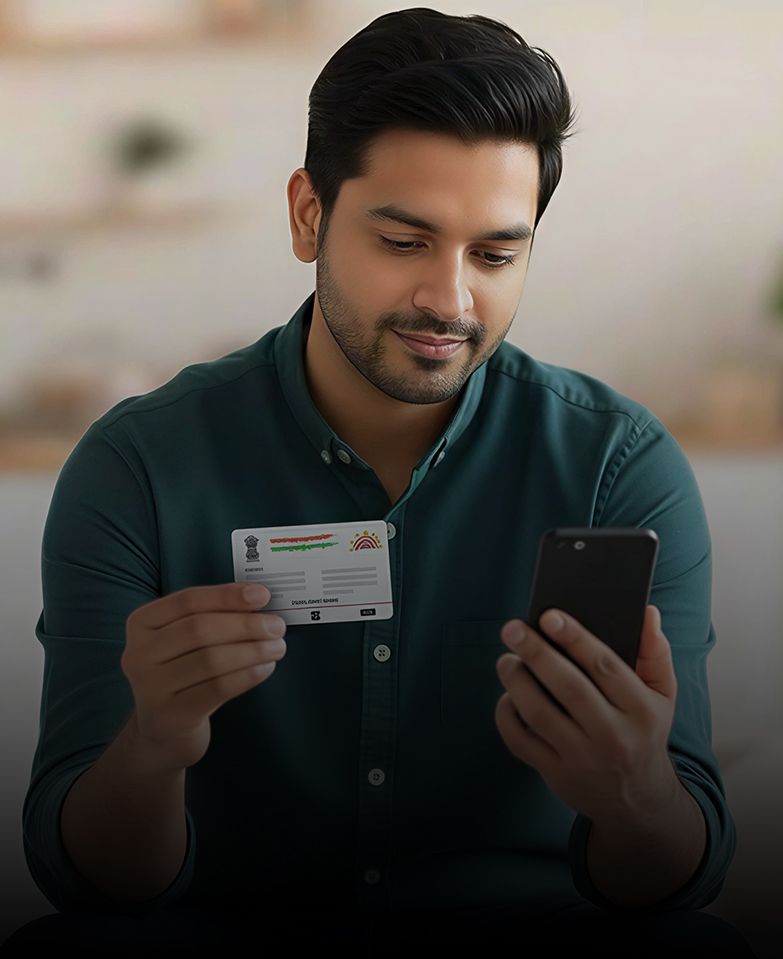
Bank Account Number - How to Find Your Account Number?
Key Takeaways
|
When managing finances, knowing one's bank account number is vital. Many individuals wonder how to find bank account number without the hassle of contacting customer service or visiting a branch in person. Fortunately, there are several ways to find this crucial piece of information.
This article discusses how to find the checking account number and provides simple methods. Whether you are a new customer or a long-time account holder, these techniques can quickly locate your number. Methods include checking your welcome letter, chequebooks, mobile banking app and online banking portal. All banks provide multiple ways for customers to check account number online or offline easily.
Understanding What Is the Bank Account Number
Before we know how to check bank account number, let us understand what it is. A bank account number is a special identification code distinguishing one account from all others. It helps the bank correctly identify and manage your account. In India, the format of account numbers differs by bank.
Public sector banks use 11 digits, while private banks may use 12 or 14 digits. The first few numbers represent the branch name, identifying the location of your bank. Now that we know what a bank account number is, the next important step is the bank account number search.
How to Find the Bank Account Number
Whether you need your account number to receive your salary or keep track of your funds, knowing how to find your bank account number is crucial.
1. Welcome Letter
The bank will send you a welcome envelope with important information when opening a new bank account. It includes your customer ID, branch ID and, most importantly, your assigned account number. Checking the welcome letter is the easiest way to know the account number.
2. Online Banking
Banks provide digital tools to view your account information conveniently. Many banks have mobile apps allowing you to check account number online. Logging into the app will immediately display your account number on the screen. It is a quick way to access your account information.
If you've registered for Internet banking, logging into your bank's website using your credentials reveals your account number. Once logged in, go to the account summary section to view your assigned number and other details. How to check bank account number securely? Online banking is one of the most efficient ways.
3. Bank Statements
If your bank still mails you paper account statements, your account number will be printed. Most banks offer electronic statements (e-Statements), which are accessible online. If you opted for e-Statements, check your registered email for the latest one. The statement typically shows your account number at the top, along with the period covered.
4. Physical Cheque Book
If you received a physical chequebook from your bank, your account number is usually on the front page. The front page contains your name, address and account number. Each check page also displays the number.
5. Bank Passbook or Account Statement
While online banking is prevalent, all banks still issue passbooks or paper account statements. These documents record your transactions. The first page of your passbook or the top of your statement usually shows your account details, including the number.
Also Read: What is Passbook?
6. Contacting the Bank
If you cannot find your account number using the previous methods, contact your bank's customer support for help. They will verify your identity and provide your account number. It is one easy way to learn how to find account number when nothing else works.
You can also go to a branch of your bank which is nearest to you. The bank staff will assist you by verifying your identity and accessing your account details on their system. It's best to visit the branch where you originally opened the account for more efficient help.
Protecting Your Bank Account Number From Unauthorised Access
In this digital age, taking necessary precautions to prevent unauthorised access to your account number is essential. Here are some steps you can take to keep safe:
- Treat your account number as sensitive information and avoid sharing it unless necessary. Be wary of random requests for the number through calls, emails or texts.
- When accessing online or mobile banking, create strong passwords using letters, numbers and symbols. Avoid obvious passwords. Change passwords regularly and do not reuse them.
- Turn on two-factor authentication for added security. It requires a second verification step, like an OTP on your phone and your password.
- Be wary of phishing attempts that trick you into sharing your account number or information. These can happen through fraudulent emails, texts and websites imitating real organisations. Always verify the legitimacy before sharing details.
- Ensure your banking devices are protected with antivirus software, updated operating systems and security patches to reduce vulnerabilities.
Maintaining strong passwords, enabling two-factor authentication, and staying alert against phishing attempts will help ensure the safety of your financial information.
Also Read: Advantages & Disadvantages Of Mobile Banking
Additional Tips and Information
1. Using a protected Internet connection: Avoid using public Wi-Fi for mobile or online banking. Public Wi-Fi is easy to hack for fraudsters, potentially exposing your account number. Instead, use a secure home connection or your mobile data plan. Avoid using networks such as those found in coffee shops, airports, or other public places.
2. Use secure websites: When transacting online or accessing your bank account number, make sure the website is secure. Look for the padlock icon, "https://," and other security indicators. Avoid entering your number on unsecured sites.
3 . Be cautious shopping online: Do not share your account details with untrusted online stores. Stick to reputable, well-known e-commerce platforms with secure payment systems to protect your information.
4. Monitor bank statements: Review bank statements and transactions regularly to detect unauthorised activity. Keep essential documents secure to prevent them from falling into the wrong hands. If you notice any errors, quickly report them to your bank.
Conclusion
In conclusion, knowing your bank account number is crucial for carrying out financial transactions and managing your funds. Using the methods discussed in this article, like checking welcome letters, chequebooks, passbooks, mobile apps, and online banking tools, ensures you can easily access your account number when needed.
If you’ve ever wondered how to find bank account number without going to the branch, these methods will help. It is important to keep your account number secure and only share it with trusted individuals. Guarding the number helps prevent unauthorised access to your funds. For those looking to open a savings account with zero balance, without a minimum balance requirement, Kotak 811 provides a great option.
Popular Searches on Kotak811
Kotak 811 | 811 Super Account | Super Savings Account Fees And Charges | Best Zero Balance Account Opening Online | Super.money Credit Card | Best Credit Card for Online Shopping In India | FD Credit Card | Visa Debit Card | Apply for Image Debit Card | Metal Debit Card | ActivMoney Savings Account | Open Savings Account Online | Savings Account Fees and Charges | Check Your CIBIL Score | Reactivate Dormant Account Online | Digital Savings Account | Apply for Personal Loan Online | Personal Loan for Education | Personal Loan For Marriage | Personal Loan For Medical Emergency | Personal Loan For Travel | Unsecured Personal Loans | Complete Guide on Fixed Deposit (FD) | Unfreeze Your Bank Account | How To Find Your Bank Account Number | How To Unfreeze Frozen Bank Account | How To Reactivate An Inactive Or Dormant Savings Account | What Is A Passbook | Zero Balance Current Account Opening Online | Zero Balance Current Account Fees & Charges | How To Get Airport Lounge Access On Debit Card | 811 Mobile Banking App
This Article is for information purposes only. The views expressed in this Article do not necessarily constitute the views of Kotak Mahindra Bank Ltd. (“Bank”) or its employees. Bank makes no warranty of any kind with respect to the completeness or accuracy of the material and articles contained in this Newsletter. The information contained in this Article is sourced from empanelled external experts for the benefit of the customers and it does not constitute legal advice from Kotak. Kotak, its directors, employees, and contributors shall not be responsible or liable for any damage or loss resulting from or arising due to reliance on or use of any information contained herein.
Share




